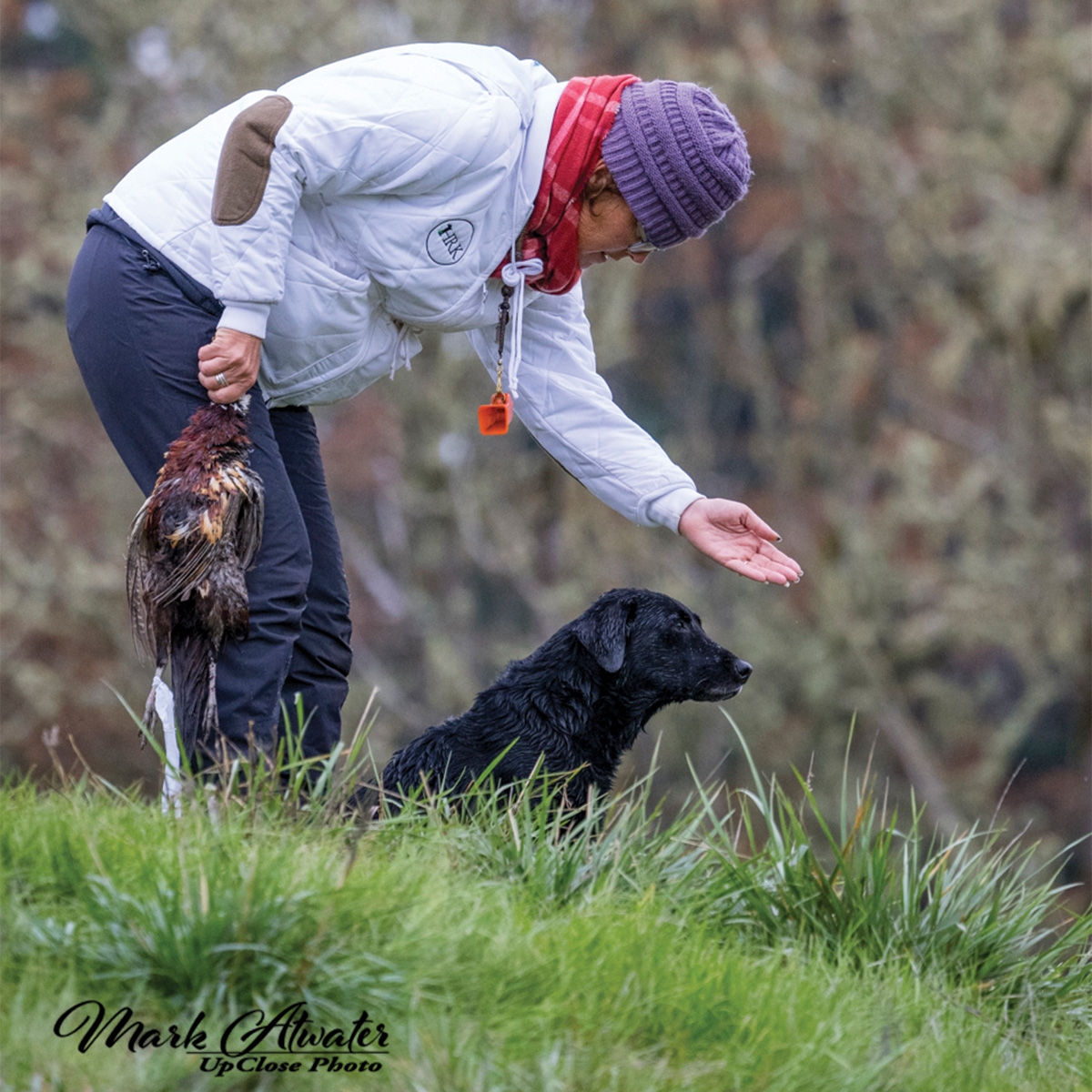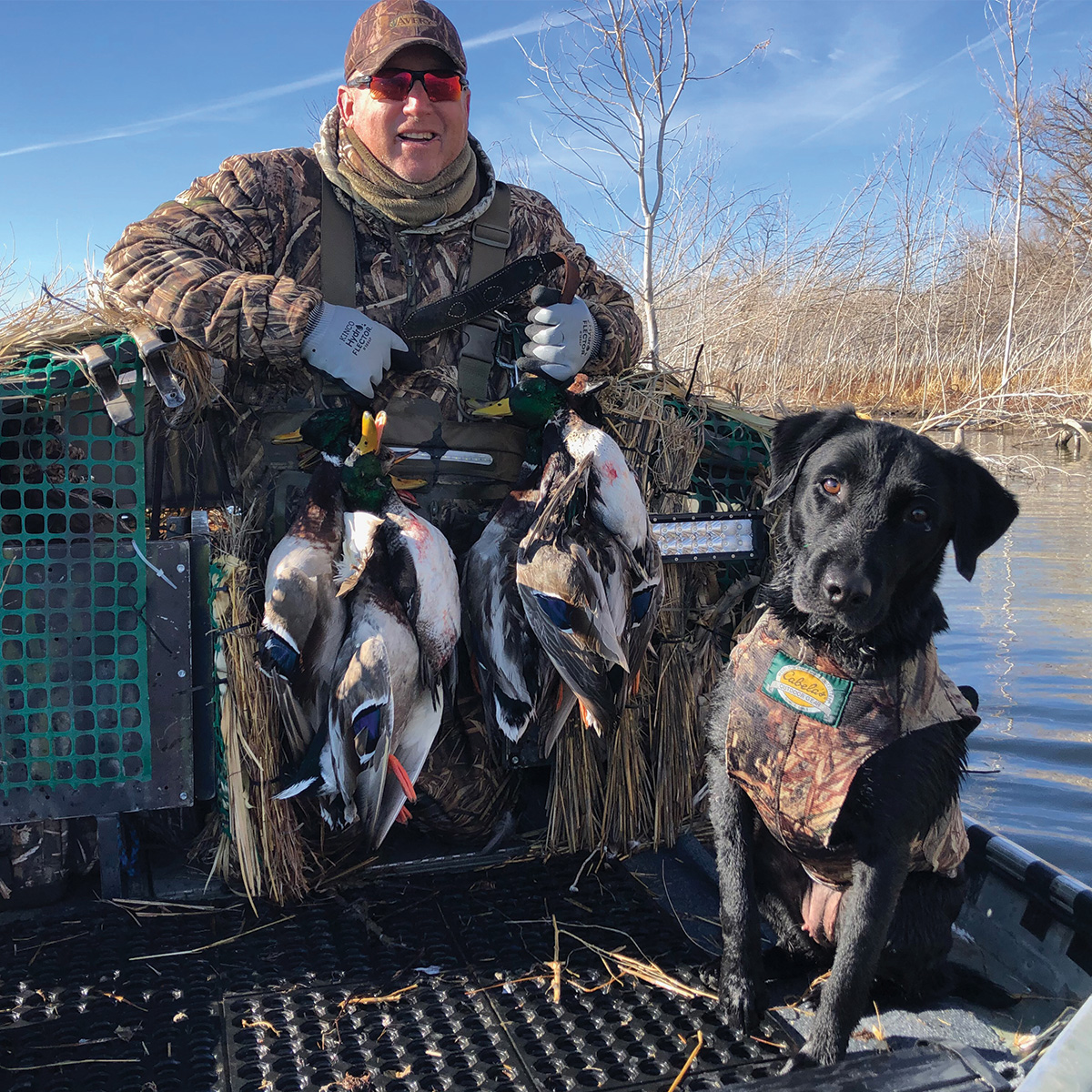Meet the Trainers: Q&A with Veteran Dog Trainers Kenny Trott and Marcy Wright
Elevate your retriever training skills with insights from Kenny Trott and Marcy Wright of Horsetooth Retriever Kennel
Elevate your retriever training skills with insights from Kenny Trott and Marcy Wright of Horsetooth Retriever Kennel


Meet veteran retriever trainers Kenny Trott and Marcy Wright of Horsetooth Retriever Kennel.
Location: Wellington, Colorado
How long have you been a trainer? Kenny has been training for 30 years. Marcy for 15.
The biggest priorities in the first year of a puppy’s life should be to teach them to be good citizens, establish good obedience, and foster a love for retrieving.
There are two main mistakes we see with people in the raising of their puppies. One is seeing puppies spend too much time in their crates or kennels and not enough time in the house with their families. Teaching puppies to live in the house as good citizens should be a priority over all other training. Secondly, we see some people underexpose their puppy to new situations. Take them for “adventure walks” every day. They should see cover, water, terrain, and all different types of social situations. Going back to the first point of having puppies in the house and yard with them at every opportunity, it gives a trainer 100s of opportunities a day to “train” their puppy. Housebreaking, coming when called, learning not to jump on people, learning not to chew on things they should not chew on, are all training opportunities that people have, every day.
We think names are important. We name all our dogs with one or two-syllable names and try not to have names that rhyme with any commands. For example, “Kit” can sound like “Sit”. Say the name you choose for your pup out loud and loudly several times to be sure it is easy to enunciate as well.

We think gunfire and water are two of the most critical introductions to a puppy. If done wrong, it can have lasting effects for the rest of the puppy’s life. Both water and gunfire should be introduced gradually in controlled and positive settings.
It sounds cliché, but the simplest way to correct breaking is to not let it start to begin with. Having a dog steady in training at home is critical before a dog is ever exposed to a hunting situation. And when you take your dog on its first hunts, leave your gun at home. Focusing on your dog and their steadiness is imperative to have a lifelong, steady hunting retriever.
Whining and noise need to be addressed with puppies before they are ever exposed to high excitement activities, like hunting. When throwing marks for puppies, we make sure to not let the habit of noise develop because once it develops, it is a very hard habit to break. If we are training a puppy and they are making noise while a mark is being thrown, we deny the retrieve. We have the thrower pick up the mark while telling the puppy, “Quiet” and have the thrower throw again. We like to sit on the ground with the puppy when introducing marks to hold them and keep them still while the marks are being thrown. A thrashing puppy is much more likely to make noise than a still puppy. Sometimes noise results from the puppy’s frustration of being made to sit still while a mark is being thrown. The puppy needs to learn to deal with this frustration. Noise from impatience is a fairly easy fix for a puppy, but noise from genetics is not as simple and can require lifelong maintenance.
We have a few guidelines for summer heat. Thankfully, in Colorado, even on the hottest days, we don’t have to deal with much humidity. The high humidity can be worse than high heat. To begin with, we make sure our dogs are physically fit and able to handle the training we ask of them. We never want to push a dog’s physical limitations, especially on hot or humid days. Oftentimes, in the heat of the summer, our training tests have water involved, even if it’s just a quick water retrieve on one of the marks. We also carefully monitor the dog through the course of the training and make sure to not let their hunts get too big and will have a gunner help the dog with the mark before they get to the point of becoming too hot. It is up to us, as dog trainers, to protect a dog from overheating and watch for signs that it is time to stop the session before the dog gets hot.

There are a few indicators we look for before saying a dog is ready to hunt. The dog will have been thoroughly exposed to gunfire, the dog will have retrieved fresh shot birds reliably and obediently, and the dog is steady.
The worst habits we see in dogs after being exposed to hunting situations are breaking and disobedience. Most often these are caused by the dog hunting before these skills are solid during training. Exposing the dog to different hunting situations in the controlled environment of training will go a long way to having an enjoyable hunting retriever for years to come! As mentioned above, if possible, the trainer needs to leave their gun at home the first times the dogs are taken hunting to foster good habits from the very beginning.
Our expectation for our retrievers is to maintain their training through the course of the waterfowl season. This requires training between our shoots to keep the dog sharp and obedient. We believe a great waterfowl dog requires as much on-the-job training that we can’t get in a training environment. Watching the sky, marking birds as they fall, and dealing with cold weather conditions exposure require a dog to go out and just hunt. But it is our job as trainers to have the tools in place to enable a dog to achieve success. A steady and obedient dog will make our job as trainers easier when exposing our dogs to real hunting scenarios.
Ducks Unlimited uses cookies to enhance your browsing experience, optimize site functionality, analyze traffic, and deliver personalized advertising through third parties. By continuing to use this site, you agree to our use of cookies. View Privacy Policy